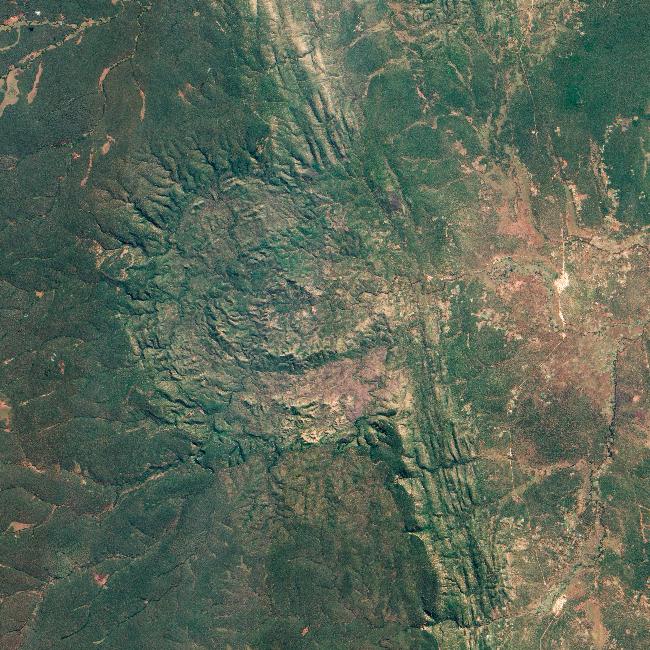

The Democratic Republic of the Congo formerly known as Zaire is no longer considered risky at this time, however tourism is not recommended at this time The country has had a tumultuous recent history Congolese politics have been dominated by the civil war in neighbouring Rwanda, with the influx of refugees from that conflict adding to the factional disputes following Mobutu's overthrow Active civil war has been taking place on Congolese territory since approximately 1998 Joseph Kabila has established a government of national unity; however, bitter divisions still exist nationwide, and the situation is unstable at this time
This country is truly vast At 2,345,408 square kilometres 905,567 sq mi, it is larger than the combined areas of Spain, France, Germany, Sweden, and Norway
Mobutu Sese Seko was president from 24 November 1965 until forced into exile on 16 May 1997 when his government was overthrown militarily by Laurent Kabila
Kabila immediately assumed governing authority, but his regime was subsequently challenged by a Rwanda- and Uganda-backed rebellion in August 1998 Troops from Zimbabwe, Angola, Namibia, Chad, and Sudan intervened to support the Kinshasa regime A cease-fire was signed on 10 July 1999 by the DROC, Zimbabwe, Angola, Uganda, Namibia, Rwanda, and Congolese armed rebel groups, but sporadic fighting continued
Kabila was assassinated in January 2001 and was succeeded by his son Joseph Kabila In October 2002, the new president was successful in getting occupying Rwandan forces to withdraw from eastern Congo; two months later, an agreement was signed by all remaining warring parties to end the fighting and set up a government of national unity
The country straddles the Equator, with one-third to the North and two-thirds to the South As a result of this equatorial location, the Congo experiences large amounts of precipitation and has the highest frequency of thunderstorms in the world The annual rainfall can total upwards of 80 inches 2,032 mm in some places, and the area sustains the second largest rain forest in the world after that of the Amazon This massive expanse of lush jungle covers most of the vast, low-lying central basin of the river, which slopes toward the Atlantic Ocean in the West This area is surrounded by plateaus merging into savannas in the south and southwest, by mountainous terraces in the west, and dense grasslands extending beyond the Congo River in the north High, glaciated mountains are found in the extreme eastern region
French is the lingua franca of the country and nearly everyone has a basic to moderate understanding of French In Kinshasa and much of the Western DRC, nearly everyone is fluent in French with Kinshasa being the second or third largest French-speaking city in the world depending on your source, although locals may be heard speaking Lingala amongst themselves Much of the eastern and southern half speaks Swahili or related languages The rest of the country speaks either Kikongo, Lingala, Tshiluba, or a smaller tribal language
The "Academie des Beaux-Arts" is often considered a touristic site and is in itself and with its gallery a good place to meet the famous artists of this country Big names like Alfred Liyolo, Lema Kusa oder Roger Botembe are teaching here as well as the only purely abstract working artist Henri Kalama Akulez, whose private studio is worth a visit
Congo is the centre of popular African music The rhythms are irresistible, once you get the feel for it Try visiting a local bar or disco, in Bandal or Matonge both in Kinshasa, if possible with live soukouss music, and just hit the dance floor!
The currency is the Congolese franc Banknotes are issued in denominations of 1, 5, 10, 20 and 50 centimes, 1, 5, 10, 20, 50, 100, 200 and 500 francs The only Congolese bank notes currently in circulation in most places are the 50, 100, 200 and 500 franc notes They are almost worthless, as the highest valued banknote the 500 franc note is worth only about US $090
US dollars in denominations above $2 are much preferred to francs In contrast, US coins and $1 and $2 US notes are considered worthless Note that if you pay in dollars, you will get change in francs Though francs may sometimes come in bills so old they feel like fabric, US notes must be crisp less than 3 folds and bwe printed in or after 2003, or they will not be accepted
There are some supermarkets in Gombe commune of Kinshasa that sell food and drinks, soap, kitchen devices and bazar: City Market, Peloustore, Kin Mart, Hasson's
SIM cards and prepaid recharge for mobile phones are available in the street and at Ndjili airport, at a reasonable price
Mastercard/Maestro ATMs are available now in Kinshasa at the "Rawbank" on boulevard du 30 Juin Gombe District, and in Grand Hotel It spits out USD$ Visa card are also usable with "Procredit" bank ATMs in Kinshasa, avenue des Aviateurs, or outside in front of Grand Hotel only $20 and $100 notes
Congo has one national dish: moambe It's made of eight ingredients moambe is the Lingala word for eight: palm nuts, chicken, fish, peanuts, rice, cassave leaves, bananas and hot pepper sauce
Alcohol is readily available in Moroni from Indian and Chinese merchants near Volo Volo Castle beer from South Africa and cheap boxed wine from France are common Most merchants will supply black plastic bags so that no one will notice you bought alcoholexcept that they only give black bags to customers buying alcohol
European restaurants will serve alcohol, too
There are more and more hotels in Kinshasa, with smaller hotels available in Gombe and Ngaliema area